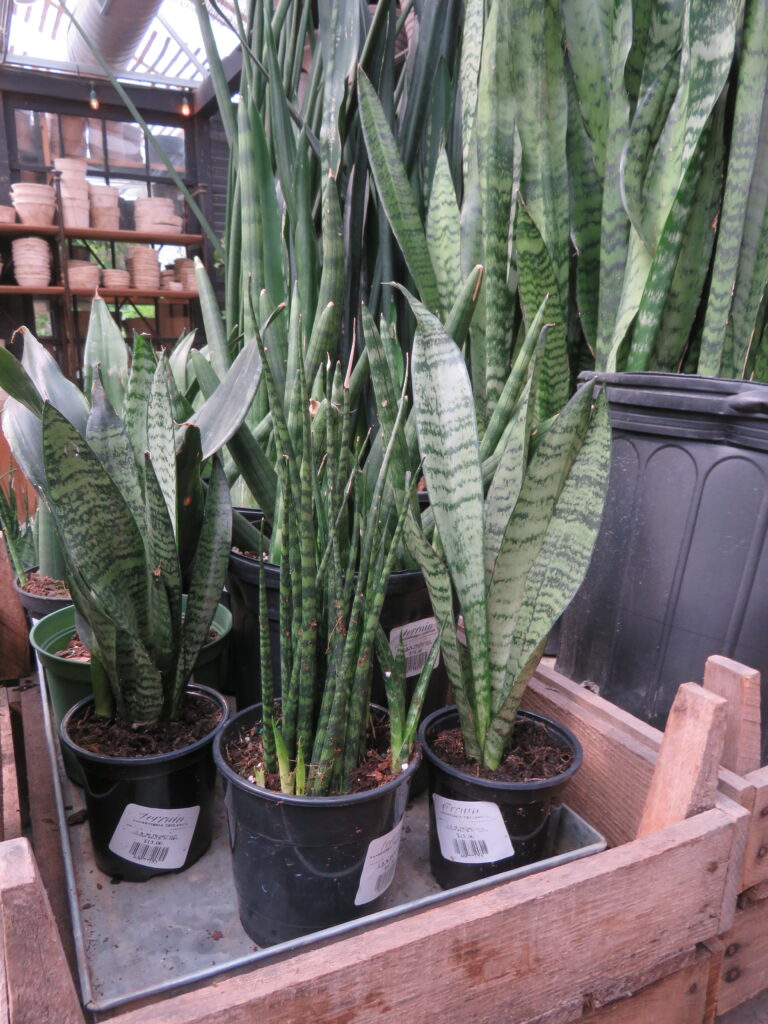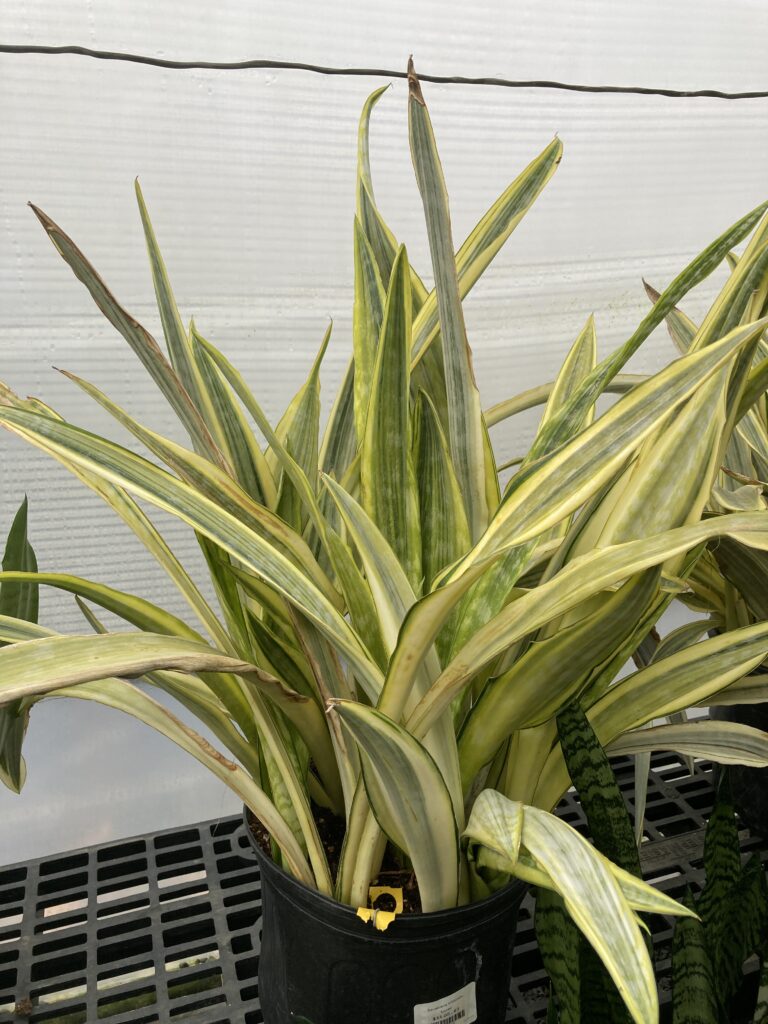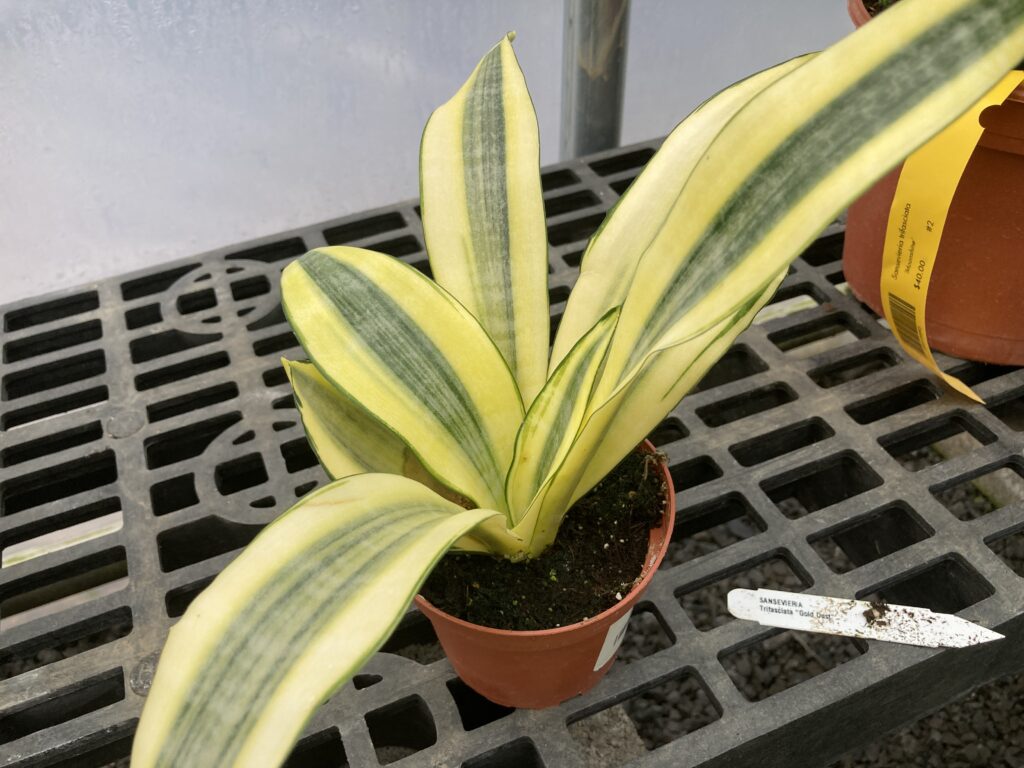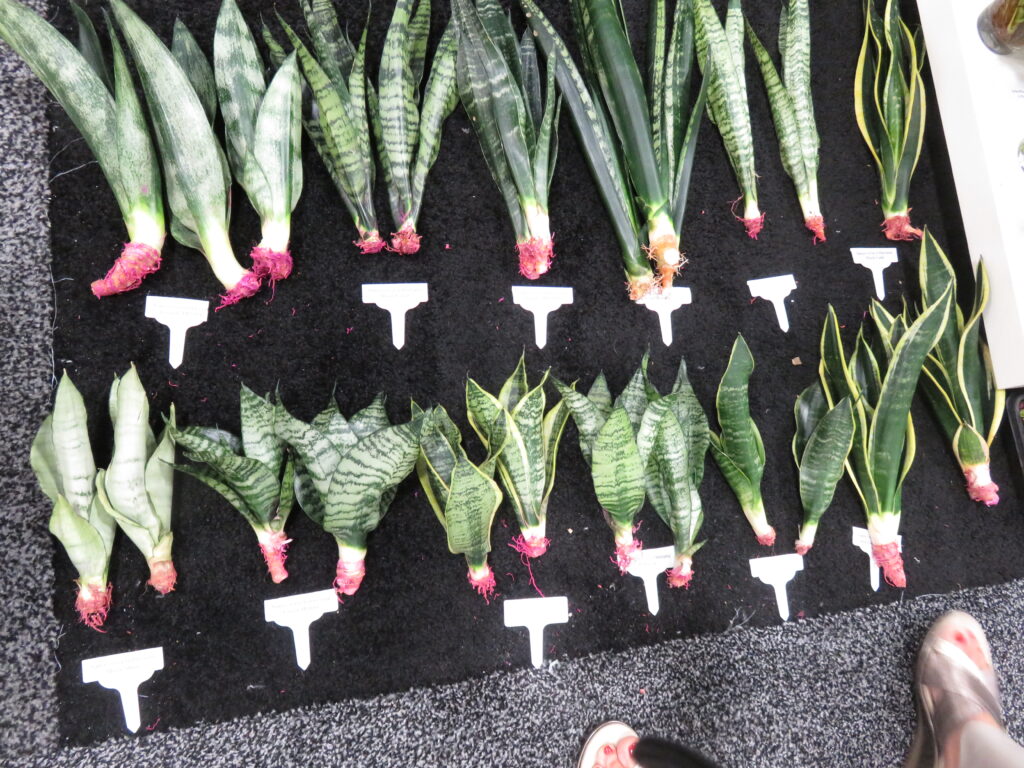
Snake plants, aka mother-in-law plant, mother-in-law’s tongue, (Sansevieria trifasciata) are one of the most popular houseplants. (USDA hardiness zones 9-11). Native to Africa, the Asian subcontinent, and Madagascar, these hard to kill plants are beloved for their architectural shape, tolerate neglect, and filter stale room air (NASA study). Snake plants are remarkably drought- and low light- tolerant and often grown in office buildings. They are beloved for their architectural shape, tolerate neglect, and filter stale room air (NASA study).
Snake plants grow 2-5 feet tall depending on species and site location. Snake plants thrive with 8 -10 hours of indirect sunlight or 1-2 hours of early-morning direct sunlight. Excessive sunlight burns the foliage and heavy shade stunts growth and diminishes foliage color. Plants grow best in warm temperatures between 70 – 90°F and do not tolerate prolonged exposure to less than 40°F temps. Keep plants away from cold drafts around windows. Room humidity is optimum between 30 – 50%.

As a houseplant, snake plants prefer a loose, well-drained potting soil mix. Overwatering is the quickest way to kill a snake plant. Too much water or letting the plant sit in water will rot its root system. Leaf yellowing is an early sign of overwatering. Dust leaves at least monthly.
Feed your snake plant once in spring and once in mid-summer with a balanced, slow-release house plant fertilizer diluted to half strength. Do not fertilize in winter. Snake plants are propagated by cuttings or division spring or summer.
Repot your snake plant every 3-5 years, or when roots grow out of the holes in the bottom of the pot. Grow in a sturdy ceramic, terracotta pot, or heavy-duty plastic pot. Repot snake plants when plants literally outgrow their containers; crowded offshoots can rip/tear containers apart. The best time to repot is in spring.
Snake plants rarely flower as indoor house plants. Creamy-white, tubular flowers emerge when environmental conditions are ideal. The night-blooming flowers are fragrant and similar in appearance to lilies.
Snake plants can spend summers outdoors. Bring plant(s) indoors as cool autumn weather approaches. During winter dormancy, reduce watering and allow soil to dry out every 7-10 days before rewatering.

Snake plants are susceptible to common houseplant pests such as scale, spider mites, aphids, gnats, mealybugs and whiteflies. Most pests can be removed with a moist rag or a gentle spray of water. Treat infestations with neem oil.
Wilting leaves or leaf loss is a symptom of overwatering and/or insufficient light, or poor potting material could result on eventual leaf loss. Select a brighter location, reduce watering frequency, and repot into new the potting soil.
In 2017-18 the genus Sansevieria was reclassified into the plant genus Dracaena by Botany taxonomists. In the past decade many new varieties have entered the world marketplace including some of these selections:
- D. trifasciata ‘Hahnii’ is known as bird’s nest snake plant and grows to only 6 inches tall.
- D. angolensi, aka S. clylndrica, has round stiff leaves that are several feet long arching outward from a central crown.
- D. trifasciata ‘Laurentii’ is a variegated cultivar has creamy yellow leaf margins.
- D. trifasciata ‘Bantel’s Sensation’ is a 3-feet tall popular favorite with white vertical stripes.
- D. pearsonii, aka rhino grass, has thick, red-tinted leaves and grows to 12 inches tall.
- D. x ‘Gold Dust’ grows 12-15 inches high; foliage is rosette of stiff sword shaped, thick vertical banded, light gold leaves with gray-green center stripe.


 Posted in
Posted in 
